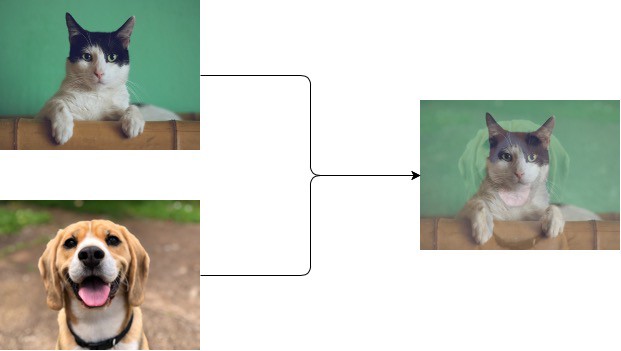MixMatch: A Holistic Approach to Semi-Supervised Learning (2019)
Contents
- Abstract
- Related works
- Consistency Regularization
- Entropy Minimization
- Traditional Regularization
- MixMatch
- Data Augmentation
- Label Guessing
- Mixup
- Pseudo Code
0. Abstract
MixMatch = (1) + (2) + (3)
- unification of current dominant approaches for SSL
- guesses low-entropy labels for data-augmented unlabeled data
- mixes labeled & unlabeled data using MixUp

1. Related works
existing methods for SSL
(1) Consistency Regularization
applies input transformations assumed to leave class semantics unaffected
- ex) deform or add noise to an input image, without altering label
Application to SSL :
-
classifier should output the same class distribution for an unlabeled example,
even after it has been augmented
-
enforces \(x\) should be classified the same as \(\text{Augment}(x)\)
Add the loss term :
- \(\mid \mid \mathrm{p}_{\text {model }}(y \mid \operatorname{Augment}(x) ; \theta)-\mathrm{p}_{\text {model }}(y \mid \operatorname{Augment}(x) ; \theta) \mid \mid _2^2\).
Drawback of this approach : domain-specific DA
\(\rightarrow\) (solution) VAT : compute an additive perturbation to apply to the input which maximally changes the output class distn
MixMatch : use consistency regularization through the use of standard data augmentation for images
- ex) random horizontal flips & crops
(2) Entropy Minimization
require that the classifier output low-entropy predictions on unlabeled data
Pseudo-Label
- does entropy minimization implicitly, by constructing hard labels with high-confidence predictions ( treat them as training data )
(3) Traditional Regularization
constraint on a model to make it harder to memorize the training data
\(\rightarrow\) make it generalize better to unseen data
2. MixMatch
“holistic” approach
- incorporates ideas from the previous works ( in section 1 )
Notation :
-
\(\mathcal{X}\) : labeled examples ( with one of \(L\) labels )
-
\(\mathcal{U}\) : unlabeled examples
( \(\mathcal{X}\) & \(\mathcal{U}\) : equally-sized batch )
MixMatch produces ….
- augmented labeled examples \(\mathcal{X}^{\prime}\)
- augmented unlabeled examples with “guessed” labels \(\mathcal{U}^{\prime}\)
Combined Loss function :
- \(\mathcal{X}^{\prime}, \mathcal{U}^{\prime} =\operatorname{MixMatch}(\mathcal{X}, \mathcal{U}, T, K, \alpha)\).
-
\[\mathcal{L} =\mathcal{L}_{\mathcal{X}}+\lambda_{\mathcal{U}} \mathcal{L}_{\mathcal{U}}\]
- \(\mathcal{L}_{\mathcal{X}} =\frac{1}{ \mid \mathcal{X}^{\prime} \mid } \sum_{x, p \in \mathcal{X}^{\prime}} \mathrm{H}\left(p, \mathrm{p}_{\text {model }}(y \mid x ; \theta)\right)\).
- \(\mathcal{L}_{\mathcal{U}} =\frac{1}{L \mid \mathcal{U}^{\prime} \mid } \sum_{u, q \in \mathcal{U}^{\prime}} \mid \mid q-\operatorname{p}_{\text {model }}(y \mid u ; \theta) \mid \mid _2^2\).
- \(\mathrm{H}(p, q)\) : cross-entropy between \(p\) & \(q\)
(1) Data Augmentation
For each \(x_b\) in \(\mathcal{X}\) … \(1\) DA
\(\rightarrow\) \(\hat{x}_b=\operatorname{Augment}\left(x_b\right)\)
For each \(u_b\) in \(\mathcal{U}\) … \(K\) DA
\(\rightarrow\) \(\hat{u}_{b, k}=\operatorname{Augment}\left(u_b\right)\) , where \(\left(u_b\right), k \in(1, \ldots, K)\)
use these augmentations to generate a “guessed label” \(q_b\) for each \(u_b\)
(2) Label Guessing
For each unlabeled example in \(\mathcal{U}\)…
\(\rightarrow\) produce a guess label, based on model prediction
\(\bar{q}_b=\frac{1}{K} \sum_{b=1}^K \operatorname{p}_{\operatorname{model}}\left(y \mid \hat{u}_{b, k} ; \theta\right)\).
Sharpening
when generating label guess, one additional step!
( motivated by entropy minimization )
Given \(\bar{q}_b\), apply a sharpening function to reduce the entropy of the label distn
\(\operatorname{Sharpen}(p, T)_i:=p_i^{\frac{1}{T}} / \sum_{j=1}^L p_j^{\frac{1}{T}}\).
(3) MixUp

(4) Pseudo Code

